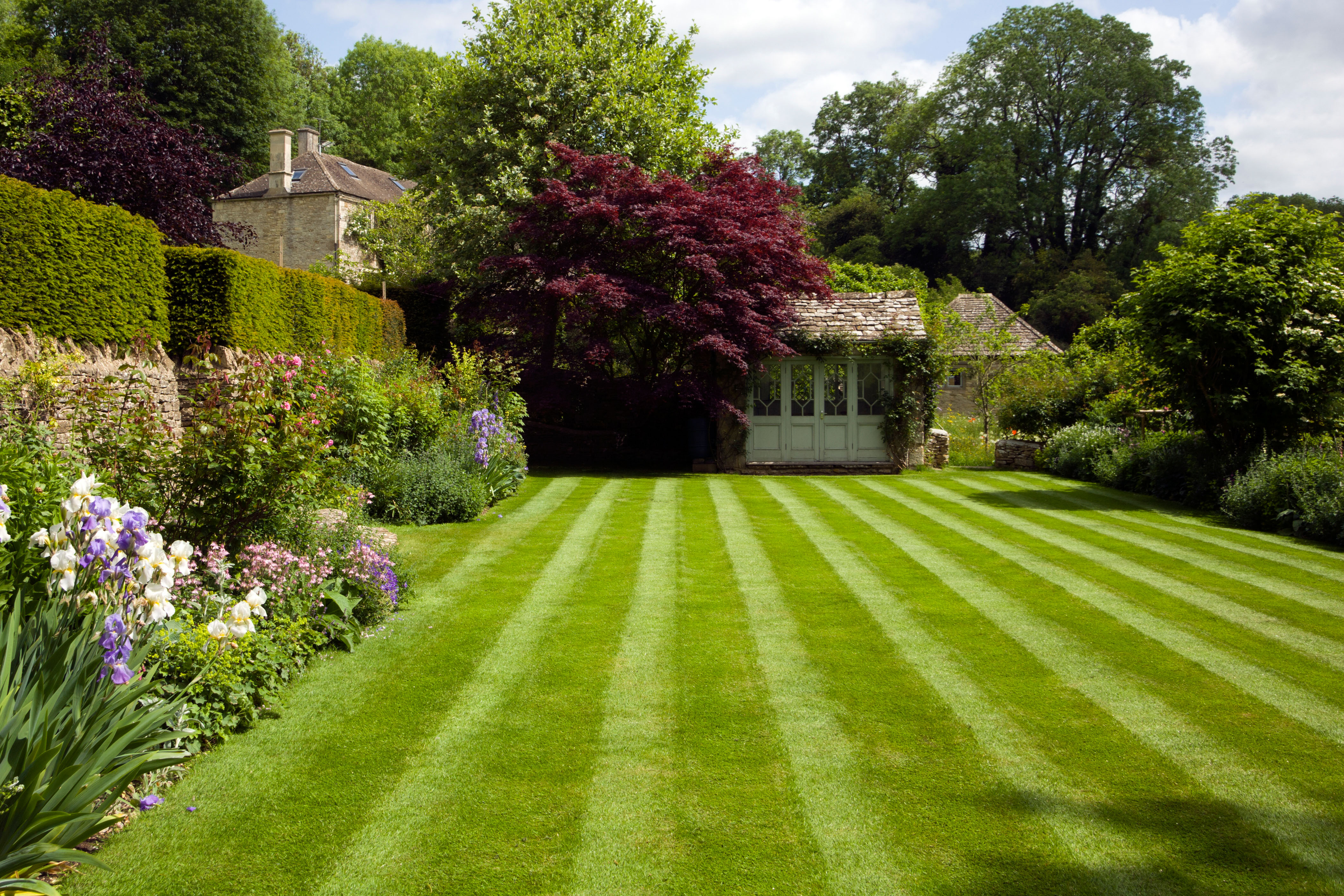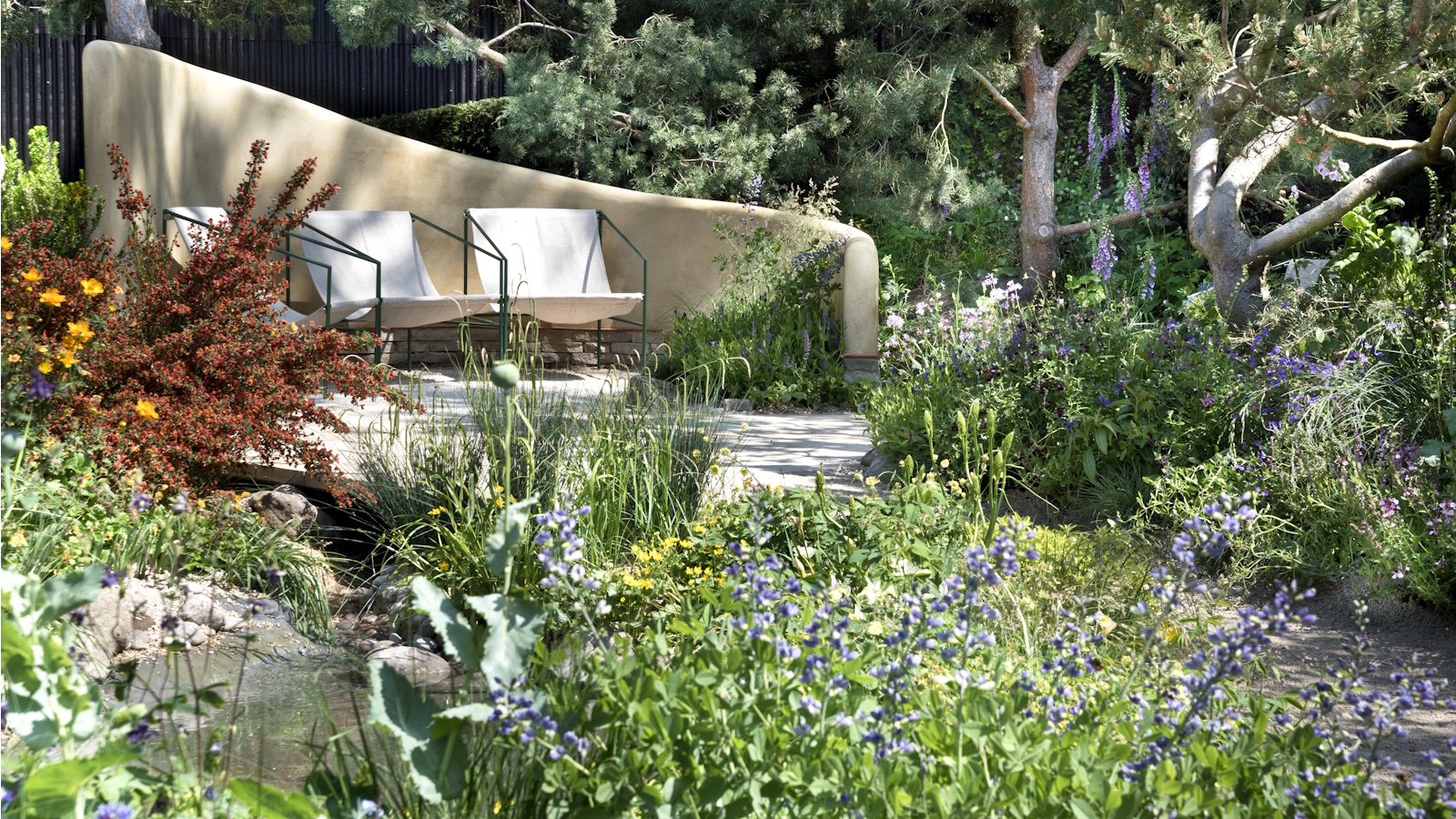How to aerate a lawn – for healthy vigorous grass
Find out how to aerate a lawn and help it grow better


To keep it healthy, it’s worth knowing how to aerate a lawn. Aerating helps air, water and nutrients reach the roots of the grass so they grow well and the lawn is strong and healthy.
The lawn is a major feature of many backyard landscaping ideas and aerating, along with mowing, watering and fertilizing, can all be required to keep it thriving and looking its best.
We’ve put together the details on which tools are required, and asked the experts for their advice on how to aerate a lawn, too so that when it comes to when to aerate a lawn, you are ready to go.
How to aerate a lawn
Aerating a lawn involves making small holes in the soil which let air, water and nutrients reach the roots. But why do you need to do it?
‘Over time, as you use your lawn, the soil gets compacted,’ explains Carlos Real, lawn care expert and managing director of TotalLawn. ‘This occurs mainly due to foot traffic and is accelerated by children and animals running around on it. This is not a problem so long as you periodically aerate the lawn. If you choose not to do this job, then what happens over time is that the soil becomes so compact that oxygen can't reach beneath the surface to the bacteria and fungi that rely on it to keep your lawn healthy.’
How to aerate a lawn manually
You can aerate a lawn manually using a fork. Spike the lawn deeply with the fork at intervals of around 12in (30cm), and then move it backwards and forwards to enlarge the holes.
This is a method that’s suitable for small areas, but it’s really better to use a purpose-made tool. ‘Manual options include rollers with spikes on, and even a contraption that attaches to your shoes and “spikes” the lawn as you walk,’ says Carlos. ‘This is a good option as you can kill two birds with one stone by wearing them when you are mowing the lawn.’
If you’re buying a manual aerator, look for a core or plug version, which actually remove plugs of grass and soil from the lawn as one of these is more effective than a spike design.
How to aerate a lawn with a machine
Make easier work of aerating a lawn by using a machine to carry out the task. ‘Hire a powered aerator that can do hollow-tine aeration,’ says Carlos. ‘Hollow-tine aeration is a process which removes small cores from the soil, opening up some space in the soil for oxygen to get down below the surface.’
If you have a large property, you might want to invest in tow plug aerator to use with a garden tractor.
How to aerate a lawn successfully
It’s vital that the soil is moist enough before you being the process of aeration. Either aerate it the day after it’s rained or water the lawn the day before if no rain is forecast. If the lawn becomes very wet through rainfall, however, wait a few days before aerating.
You will need to make several passes in different directions over compacted lawn areas whether with a machine or manually. The places that need it most will be kids’ play areas, or the runs pets use.
Leave the plugs of soil on the lawn after aeration – they will break down if it rains or crumble next time you mow the lawn.
‘Most people will aerate after doing the annual dethatching job, as they both should be done in the spring or fall,’ says Carlos. ‘Just remember to give the lawn a good feed and watering after you’ve done these jobs because you will have put your lawn under serious stress.’
For lawns with warm season grasses, however, aerate in late spring or the very first part of the summer.
‘A safe general rule for time of aeration is to aerate only when the desirable grasses are growing vigorously,’ says John C Harper, II, agronomist at PennState Extension.
Worried about damaging the lawn? In times of active growth, grass recovers quickly and fills in the places where soil has been exposed by the aeration process.
Can I use a pitchfork to aerate my lawn?
You could use a pitchfork to aerate a lawn, but it’s not the optimum way to do the job. It can improve an area, but experts warn that spiking can make compaction worse. ‘Spikers actually increase soil compaction as the movement of the soil to all sides by the penetration of the solid tine forces the soil into a denser mass,’ says John C Harper, II, agronomist at PennState Extension.
Is aeration good for your lawn?
Aeration is good for a lawn, and a task that you might want to undertake once a year. The reason aeration makes a lawn healthier is that compacted soil prevents water and nutrients reaching the roots of the grass, as well as air. The problem might show up when the lawn is under stress in hot weather or periods of low rainfall, when it loses its verdant color, thins and even dies.
Once the compaction is alleviated air, water and nutrients can get to the roots and thicker and healthier grass should be the result.
Sign up to the Homes & Gardens newsletter
Design expertise in your inbox – from inspiring decorating ideas and beautiful celebrity homes to practical gardening advice and shopping round-ups.

Sarah is a freelance journalist and editor. Previously executive editor of Ideal Home, she’s specialized in interiors, property and gardens for over 20 years, and covers interior design, house design, gardens, and cleaning and organizing a home for Homes & Gardens. She’s written for websites, including Houzz, Channel 4’s flagship website, 4Homes, and Future’s T3; national newspapers, including The Guardian; and magazines including Future’s Country Homes & Interiors, Homebuilding & Renovating, Period Living, and Style at Home, as well as House Beautiful, Good Homes, Grand Designs, Homes & Antiques, LandLove and The English Home among others. It’s no big surprise that she likes to put what she writes about into practice, and is a serial house renovator.
-
 Victoria Beckham has a unique formula for perfect bedding: 'Very expensive sheets and cheap pillows' – you can follow her example from $15
Victoria Beckham has a unique formula for perfect bedding: 'Very expensive sheets and cheap pillows' – you can follow her example from $15Victoria revealed she goes for crisp, white bed sheets and pillows with neck support from Target – and you can shop similar buys at an ultra-low cost
By Hannah Ziegler Published
-
 I just discovered the best non-toxic product for getting rid of ants in your yard – and you probably already have it in your bathroom cupboard
I just discovered the best non-toxic product for getting rid of ants in your yard – and you probably already have it in your bathroom cupboardThis household item is an effective ant deterrent that doesn't leach harmful chemicals into your soil
By Tenielle Jordison Published